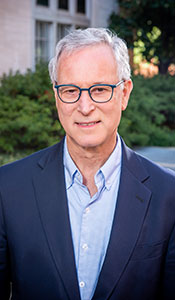In May, revised diagnostic criteria for NF1 were published in Genetics in Medicine, the journal of the American College of Medical Genetics and Genomics (Revised diagnostic criteria for neurofibromatosis type 1 and Legius syndrome: an international consensus recommendation | Genetics in Medicine (nature.com). The revised criteria are the product of a systematic, multi-year collaborative project of more than 90 NF experts from the international scientific community to arrive at a broad consensus.
Among the challenges of diagnosing NF1 are that many of the features of the condition are age-dependent, and there is also wide variability in its presentation and expression. Also, some other conditions have features that overlap with NF1. The original diagnostic criteria for NF1 were established at the National Institutes of Health (NIH) Consensus Development Conference in 1987; since that time, significant scientific advances related to diagnosis of all forms of NF have occurred, including the discovery of the genes that cause NF1, NF2, and schwannomatosis; the identification of Legius syndrome; the development of clinical genetic testing; and advances in diagnostic imaging technology.
The methodology used to acquire clinical insight from NF experts for the revised criteria involved a multi-step process that included the Delphi method, which utilized electronic questionnaires to gather information. The newly released publication includes updated criteria for NF1 as well as diagnostic criteria for Legius syndrome and mosaic NF, with revised criteria for NF2 and schwannomatosis expected to be released later this year. These updated criteria, which are expected to be widely adopted, reflect advances in our understanding of NF1, with the hope that diagnosis can be made more quickly and accurately in affected individuals.
Revised Diagnostic Criteria for NF1
The new diagnostic criteria for NF1 are broadly similar to those released in 1987, although they have been annotated and modified to reflect our expanded knowledge of the condition (Table 1 Revised diagnostic criteria for neurofibromatosis type 1 (NF1). (nature.com). It is important to note that individuals diagnosed with NF1 under the original criteria still have a valid diagnosis. As with the original criteria, the presence of two features out of the seven criteria is needed for a diagnosis of NF1 to be met.
Major changes in the new criteria concern the role of genetics and genetic testing. Finding a pathogenic variant in the NF1 gene is now a diagnostic criterion, though this alone is not sufficient to establish a definitive diagnosis unless another criterion is met. The original criteria stipulated an affected first degree relative as a diagnostic criterion, but the new criteria specify that this applies only if a parent is affected. Another change includes an addition to the criterion regarding the presence of two or more iris Lisch nodules.
The revised criterion specifies either the presence of two or more Lisch nodules OR the presence of two or more choroidal abnormalities (CAs). Choroidal abnormalities can be identified by a skilled ophthalmologist using a special instrument, and their presence could play a role in diagnosis if Lisch nodules are not present in an individual suspected of having NF1. They do not have a clinical effect on vision. Another change is rewording of the criterion specifying the presence of osseous lesions.
Criteria for Legius Syndrome
Legius syndrome presents with multiple café-au-lait spots and skin fold freckles, but not the tumor-related manifestations of NF1. It is due to pathogenic variants in the SPRED1 gene, which encodes a protein that interacts with the protein product of the NF1 gene. The diagnostic criteria for Legius syndrome include two criteria that must be met in individuals who do not have a parent diagnosed with the condition. For individuals with an affected parent, a diagnosis of Legius syndrome is made if one or more of the criteria is present (Table 2 Diagnostic criteria for Legius syndrome: (nature.com)).
Diagnostic Criteria for Mosaic NF1
For the first time, diagnostic criteria have been established for mosaic NF1, which can produce segmental NF or can result in generalized manifestations. Mosaic NF1 occurs when the NF1 gene mutation arises during early embryonic development, leading to a mixture of cells with or without the mutation in the body. The diagnostic criteria are:
- The presence of a pathogenic NF1 variant that is present is less than 50% of apparently normal tissue AND one other NF1 diagnostic criterion (except a parent fulfilling diagnostic criteria for NF1)
- The presence of an identical pathogenic NF variant in two independent affected tissues (in the absence of a pathogenic NF1 variant in unaffected tissue)
- Segmental distribution of café-au-lait macules or cutaneous neurofibromas AND
- Another NF1 diagnostic criterion (except a parent fulfilling diagnostic criteria for NF1)
- OR Child fulfilling diagnostic criteria for NF1
- Only one NF1 diagnostic criterion from the following list: freckling in the axillary and inguinal region, optic pathway glioma, two or more Lisch nodules or two or more choroidal abnormalities, distinctive osseous lesion typical for NF1, two or more neurofibromas or one plexiform neurofibroma AND a child fulfilling the criteria for NF1
Conclusion
Although the original diagnostic criteria formulated in 1987 have proved to be very useful, advances in knowledge of NF1 made this revision timely. The leaders of the effort, as well as the many experts around the world who contributed, are recognized on the publication in Genetics in Medicine. The role of the Children’s Tumor Foundation in supporting and coordinating this work also should be recognized.
